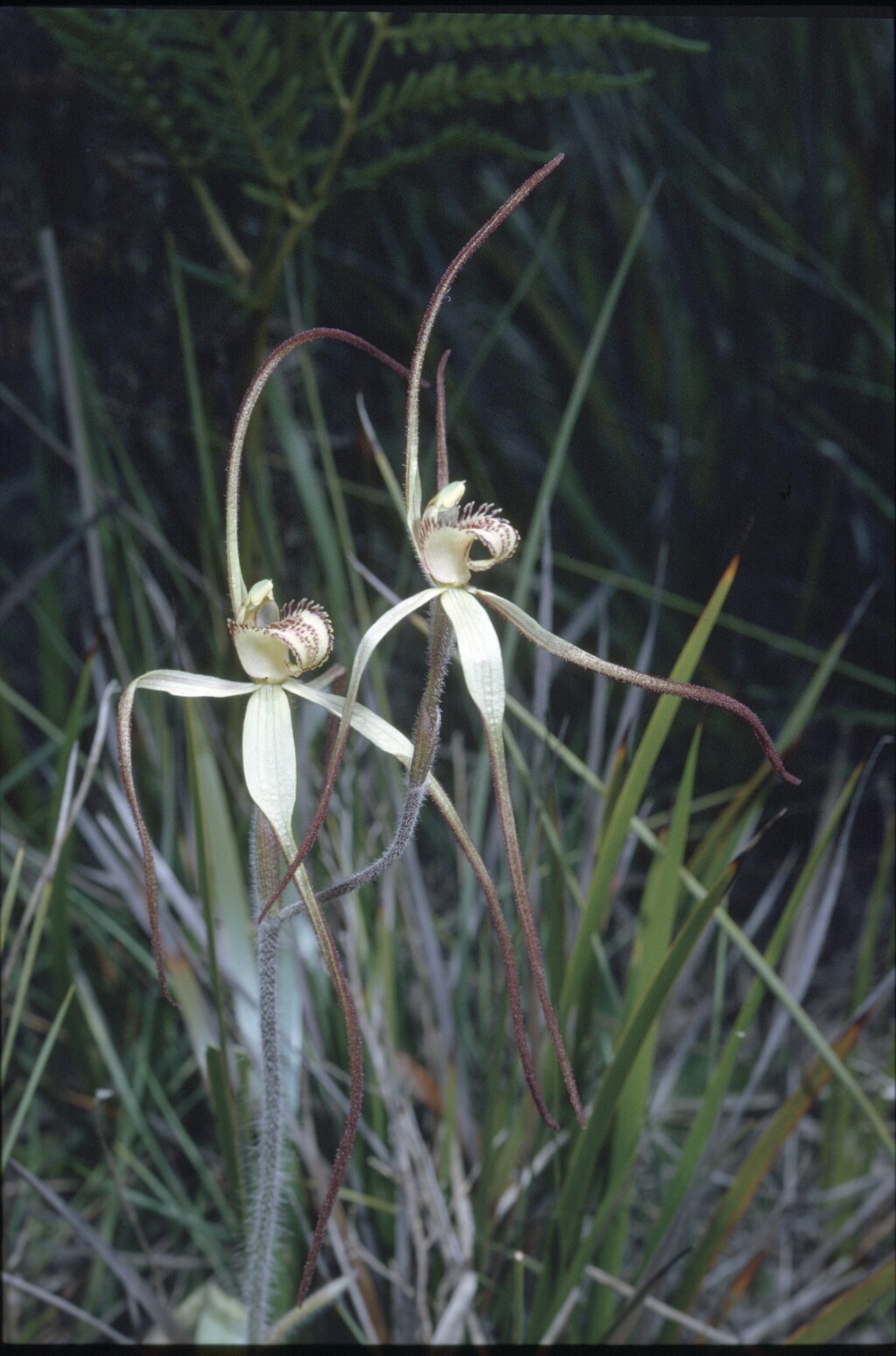Caladenia fragrantissima
D.L.Jones & G.W.CarrFlowering plant 20–40 cm tall. Leaf 6–10 cm long, 10–15 mm wide. Flowers 1–3, strongly scented; perianth segments 5–8 cm long, creamy white to yellowish green with dark red to blackish glandular tips; sepals flattened at base, 2–4 mm wide, abruptly tapered to a long tail densely covered in glands and/or glandular hairs; petals shorter than sepals but otherwise similar. Labellum curved forward with apex recurved and lateral lobes erect, lamina ovate, obscurely 3-lobed, 16–20 mm long and 8–10 mm wide (when flattened), cream with blackish margins and calli; margins of lateral lobes fringed with pale-tipped, linear calli to 1.5 mm long, margins of mid-lobe with shorter calli becoming tooth-like near tip; lamina calli in 4 or 6 somewhat crowded rows, extending onto mid-lobe, narrow, foot-shaped, c. 1.3 mm long at base of lamina, decreasing in size towards apex. Flowers Sep.–Oct.
GleP, Brid, VVP, GipP, WaP, Gold. Also SA. Known with certainty in Victoria only from the far south-west, between Nelson and Portland, where it grows in coastal and near-coastal heath or heathy woodland in sandy loam.
Characterized by its greenish perianth segments with reddish to blackish glandular tails and a strong floral fragrance, but difficult to distinguish from C. patersonii and C. orientalis.
Caladenia orientalis reportedly differs from C. fragrantissima in having larger leaves, a generally shorter flowering stem, larger flowers and a tendency to have more cells in the glandular hairs which cover the tips of perianth segments. However, in herbarium specimens there is no disjunction in the size of flowers, leaves or flowering stem between the two species and the full range of measurements is almost identical for both. Although C. fragrantissima tends to have perianth segment tips covered with 1- or 2-celled hairs (or glands), at least some (e.g. from Nelson) have long hairs identical with those of C. orientalis.
Entwisle, T.J. (1994). Orchidaceae. In: Walsh, N.G.; Entwisle, T.J., Flora of Victoria Vol. 2, Ferns and Allied Plants, Conifers and Monocotyledons, pp. 740–901. Inkata Press, Melbourne.
 Spinning
Spinning

